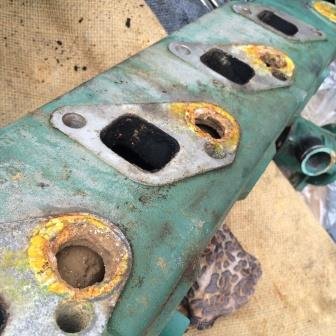PMF1984
Guru
After 3 years, the boat is "ready." So I went to load it up to bring it to the homeport.
Since I'll be underway on Saturday morning between 5:00 and 5:30 am, I decided to do some prechecks this afternoon. (boat is 4.5 hours away by car)
Checked oil - OK
Checked transmission oil - OK
Checked coolant level - nothing in the little plastic tank. Opened up heat exchanger, stuck my finger in -dry at least as far as my finger would reach.
Went to Operators Manual for Westerbeke 100, the troubleshooting section:
4. ENGINE OVERHEATING
a. Cooling water shortage
b. Water leaks
c. Belt loose or smeared with oil
d. Raw water pump defective
So the question I have is... other than a leaky hose connection what would cause "a. Cooling water shortage?"
And... can you add coolant when underway? seems like any real loss cannot be made up by checking every hour or so, and if the little plastic tank is empty how does on add coolant without a subsequent trip to the hospital? ( you are supposed to add water up to the rim of the filler cap neck. ( which means you would have to remove it (is it like an automotive radiator (do not remove when hot)?
This is frustrating.
Since I'll be underway on Saturday morning between 5:00 and 5:30 am, I decided to do some prechecks this afternoon. (boat is 4.5 hours away by car)
Checked oil - OK
Checked transmission oil - OK
Checked coolant level - nothing in the little plastic tank. Opened up heat exchanger, stuck my finger in -dry at least as far as my finger would reach.
Went to Operators Manual for Westerbeke 100, the troubleshooting section:
4. ENGINE OVERHEATING
a. Cooling water shortage
b. Water leaks
c. Belt loose or smeared with oil
d. Raw water pump defective
So the question I have is... other than a leaky hose connection what would cause "a. Cooling water shortage?"
And... can you add coolant when underway? seems like any real loss cannot be made up by checking every hour or so, and if the little plastic tank is empty how does on add coolant without a subsequent trip to the hospital? ( you are supposed to add water up to the rim of the filler cap neck. ( which means you would have to remove it (is it like an automotive radiator (do not remove when hot)?
This is frustrating.


